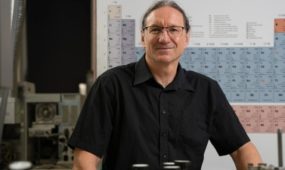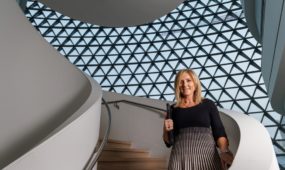School adopts the Nunga Way to help close gap
Education
New Aboriginal cultural teaching framework is bearing fruit for an innovative South Australian primary school.

Sign up to receive notifications about new stories in this category.
Thank you for subscribing to story notifications.

A school in Adelaide, South Australia is leading the Nunga Way in successfully teaching children from a new framework based on local Aboriginal culture.
Led by local Ngarrindjeri, Kaurna, Narungga, and Pitjantjatjara Aboriginal peoples under the guidance of Aboriginal scholar Dr Tyson Yunkaporta, the school established what it named the Nunga Way, a teaching framework based on local Aboriginal worldviews and philosophy.
Education researchers from the University of South Australia, including Dr Jamie Huff Sisson, released results this week of their study of the alternative teaching approach at the school, which wants to remain anonymous.
Dr Sisson said the program was having a positive impact and could be easily adapted by schools around Australia.
While the school “already had a long history of reimagining teaching practices”, Dr Sisson said the results of the Nunga Way were impressive.
The Nunga Way is about “teaching culture through culture”, the school embracing more traditional Aboriginal perspectives to classes like the importance of outdoor learning, working together and checking in with feelings.
Its approach is named after the word “Nunga”, a term that Aboriginal peoples in southern South Australia use to self-identify.
“Often, even well-meaning non-Aboriginal teachers treat Aboriginal culture as something ‘other’, something to be studied from the mainstream, Western perspective,” Dr Sisson said.
“The culturally responsive pedagogies approach flips this around, and applies principles from Aboriginal culture, or any other chosen culture, to the teaching of everything, not just to learning about that particular culture.”
Dr Sisson said local Ngarrindjeri, Kaurna, Narungga and Pitjantjatjara Aboriginal peoples led the creation of the alternative school teaching framework.
“The results are a significant indication of how successful this type of approach can be – we have found the project is not only benefitting students of Aboriginal heritage, but students from all cultural backgrounds,” Dr Sisson said.
The study found positive outcomes from the teaching approach, noting: “A significant spike in enrolments over the past three years has been attributed to growing interest and support from the community.”
The test-case school is a publicly funded, culturally rich school, teaching children from preschool to year seven.
It has a high population of Aboriginal children, other ethnicities, and families with diverse social and economic circumstances, approximately 40 per cent of children attending access school subsidy.
Two school leaders, six teachers, eight children, and seven parents were involved with the study that explored the school’s approach in having three distinct communities of learners arranged in mixed-aged groupings.
The study found children and families felt a strong sense of belonging.
“This not only helps Aboriginal children relate more easily to the lessons they are being taught, it also helps all children learn new perspectives and values and think about their own learning identity in new ways,” Dr Sisson said.
“It helps to build a sense of community.”
The Nunga way has five main streams, “Watch and learn” focuses on learning from others and promotes careful and active observation and listening.
“All together” is about working collaboratively with others and “DIY” is the do it yourself approach to applying knowledge in different ways through independent learning choices.
“Celebrate”– focuses on demonstrating learning and understanding and passing on knowledge to an audience, while the thumb represents part of the hand that is used at each stage to “check feelings.”
Dr Sisson said each school has its own culture and while others could not replicate this program exactly, they could use the principles and concepts to develop their own culturally responsive teaching framework.
“The school we studied didn’t have huge resources or anything like that; this was all achieved through a willingness to engage with community and families to create a teaching framework that is informed by the culture of the students attending the school,” Dr Sisson said.
Dr Sisson worked with Associate Professor Victoria Whitington and Anne-Marie Shin in qualitatively assessing the teaching practices.
Jump to next article



